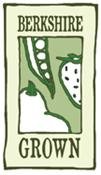At a Farm in Va., Volunteers Raise Produce to Donate to Food Banks
By Jackie Spinner
Washington Post Staff Writer
Sunday, April 13, 2008; C01
WOODSTOCK, Va. -- On a crisp spring Saturday in the Shenandoah foothills, a cry rang out and multiplied through the potato fields, down the lines of tilled dirt, past hats and bluejeans and little kids trying to remember what seven inches looked like to space the spuds.
As they finished planting the potatoes, a farmworker announced in a booming voice that the 80 volunteers would move on to a different field to plant onions.
The crowd cheered with the enthusiasm of people whose work that day was greater than the day itself. They were part of an unusual charitable effort, planting crops to supply more than 430 food banks in nine cities and 25 counties in Virginia, including Fauquier and Loudoun.
"I think it's great to give back to the community," said Michael Armstrong, 17, a student at Strasburg High School. "It goes to the food banks, and it's a good cause."
As he talked, Armstrong loaded potatoes into a white bucket initially used for kosher pickles.
Bob Blair started the Volunteer Farm in Shenandoah County ( http://www.volunteer http:// http://farm.org) five years ago on land he had bought to escape the metropolitan routine of working for the Federal Emergency Management Agency in Washington and living in McLean.
This year, the farm will plant 40 acres of watermelons, cantaloupes, green beans, beets, turnips, onions, corn, peas, cucumbers, potatoes, okra and lima beans. Harvesting varies with the planting seasons, but the onions will come in July and the potatoes in August.
The Blue Ridge Food Bank picks up the food in crates, loads it onto a truck and distributes it to pantries in its network.
Blair, 73, a jovial man with a shock of white hair, is a widower, a father of three and the son of a newsman who covered the Southwest and South America for NBC.
When Blair worked for FEMA as a public affairs official, covering more than 400 disasters before he retired 16 years ago, he had a small vegetable garden in his McLean home.
"It was very shady, so it wasn't successful," he said. "The kids didn't like vegetables anyway."
Blair first started a Christmas tree farm on the land. Then he had a vision one night that led him to a new calling: to grow food for the needy.
"I woke up one morning, and I don't try to put any religious meaning in this, but there was an idea, a total idea in essence," he said. "I considered it to be mandatory orders."
The farm is majestically lighted by sunrises, and on cool spring mornings, the fields are covered in dew. Horses graze at nearby farms, and tractors share the roads with cars.
"We're out here to help and to serve God," said Amber Brady, 19, a student at James Madison University. "Plus, I'm out here having fun with my friends."
Blair spoke to the volunteers about his mission before sending them out to the fields.
"If we don't do something, then we're not going to close this poverty," he said. "Obesity. Diabetes. It's a gap we're not even trying to zero in on."
Volunteers come from church groups, scout troops, high schools, university clubs, fraternities and sororities. Last year, the farm had 2,300 volunteers. Of those, nearly three-fourths were under 18.
Some of the youngest are 5 or 6 years old. Blair said the young volunteers sometimes understand hunger better than the adults.
"They often, almost through sensing it, know kids in their class who are hungry," he said. "An adult wouldn't catch that difference."
The Volunteer Farm provides produce to food banks to supplement their canned goods and nonperishable items, which are often cheaper and easier to collect, store and distribute.
Steven McFarland, spokesman for Chicago-based America's Second Harvest, said that more people are going hungry and that food banks everywhere are experiencing shortages as they try to keep up with increased demand.
Second Harvest, the largest charitable food network in the country, collects and distributes more than 2 billion pounds of food and grocery products to more than 200 food banks and food-rescue organizations in all 50 states, the District and Puerto Rico each year.
The network estimated in its 2006 hunger survey that 66 percent of all the households it serves have annual household incomes at or beneath the poverty line.
The U.S. Department of Agriculture estimated in 2005 that 35.1 million Americans are "food insecure," meaning their access to enough food is limited by a lack of money and other resources.
"The economic climate is making things difficult for everyone," McFarland said, adding that food-bank-dedicated farms such as the one in Virginia are rare.
More often, food banks get leftover produce from farmer's markets or "seconds" that might be difficult for farmers to sell. They also rely on government programs to buy produce.
Brian Smith, chief operating officer for the Capital Area Food Bank in the District, said the banks never have enough fresh produce.
The Capital Area Food Bank serves an estimated 383,000 people a year, "and that number is growing," Smith said.
Ginny Hamrick, a Strasburg resident who works at Compassion Cupboard, a food pantry supported by local churches, said having fresh produce gives needy people a sense of dignity.
"It gives the families an opportunity to have a choice of fresh vegetables instead of getting canned, processed food," she said.
Wynettia Slaughter, a caseworker with a transitional housing program in Bealeton in Fauquier County, said the farming charity benefits the program's food bank.
"It's going to feed many people," she said. "And it gives churches and families an opportunity to grow their own food."


No comments:
Post a Comment